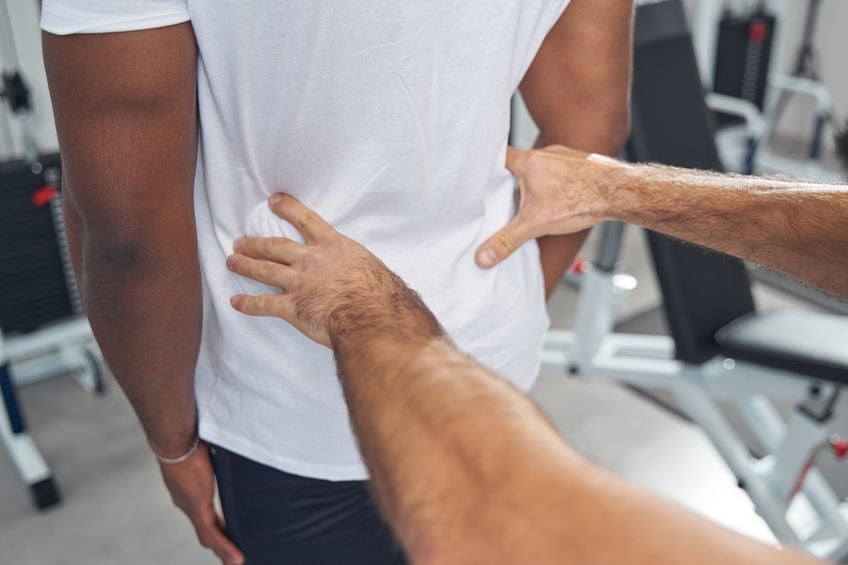Pain Management For Clavicle Fractures
The clavicle or collarbone is located between the sternum and scapula. This bone connects the arm to the body and helps provide shoulder support. Clavicle fractures account for about 5% of all adult bone breaks and about half of all shoulder fractures. Most cases come from accidents like falls on an outstretched arm or a blow to the shoulder. Clavicle fractures are especially painful. While most cases do not require surgery, patients do require different means of pain management.

Don’t ignore the signs
There is a big difference between a bruised shoulder and a clavicle fracture. Someone with a broken collarbone usually would have received a blow or been involved in a collision. Immediately following the incident, the shoulder droops or shortens relative to the other shoulder. Some people have to hold up the damaged arm with the opposite arm. Swelling, bruising, instability, and crepitus of the shoulder are other signs of a fracture.
How long does the pain last?
Clavicle fractures can occur in 3 different places, with most happening in the middle third of the collarbone. Some lateral breaks happen closer to the shoulder and coracoclavicular ligament. Even less occur near the sternum. An orthopedic surgeon will assess the shoulder with a physical exam and x-rays before deciding on treatment. As long as the bone is not 100% displaced, doctors will usually suggest a sling or special brace to keep the shoulder in place. The pain depends on the degree and location of the injury. Clavicle fractures near the sternum have the least pain. Midshaft breaks are the most painful, lasting several weeks. Certain methods can help keep pain at a minimum.
1. Stay still
The advice sounds simple, but mobilizing the arm is the best way to reduce pain. The arm will be in a sling, and movement should be minimized as much as possible. A unique sling called a figure 8 sling can further stabilize the shoulder and arm. The figure 8 sling doubles and wraps over the shoulders and under the armpits. The harness keeps the shoulder in place, reducing pain in the process.
2. Trust in ice
Patients will notice increased pain and tenderness in the days after the collarbone injury. Symptoms are common and a sign of inflammation. Cold therapy helps reduce inflammation and relieve pain for short periods. Apply the ice pack for 10-20 minutes every hour or as the doctor advises.
3. Use pain medication
Pain medication is the best option for managing pain. As the shoulder heals, there will be pain, tenderness, and inflammation. Non-steroidal anti-inflammatory drugs (NSAIDs) can often provide a good amount of relief for patients. Sometimes, a doctor will prescribe more potent painkillers like an opioid for short periods. Make sure to follow the guidance of the doctor to avoid dependency.
Manage pain the right way
Clavicle fracture pain can last at least 2 weeks, gradually decreasing over time. Most cases will need 6-8 weeks of non-surgical treatment for a full recovery. There will be some shoulder and arm strength loss, but the injury can usually heal without surgery. During the recovery process, stabilization of the arm, cold therapy, and pain medication can make daily living more comfortable. Over time, physical therapy helps to regain movement. Take things slowly for a fast recovery.
Can Lower Back Pain Return After Spinal Surgery? 3 Lifestyle Changes To Get The Most Out Of Fusion
Minnesota Valley Valley Center2024-04-02T14:49:38-05:00April 15th, 2024|
Spinal surgery is an excellent solution for lower back pain, but symptoms can return. With lifestyle changes, patients can get the most out of fusion.
A New Lease On Life: Exploring How Robotic Total Joint Replacement Can Get You Active Again
Minnesota Valley Valley Center2024-03-24T17:38:47-05:00March 29th, 2024|
Robotic total joint replacement uses a robotic arm to replace the joint. This innovative approach allows a quick return to activities.
Restoring Dexterity: How Outpatient Carpal Tunnel Surgery Can Change Your Life
Minnesota Valley Valley Center2024-03-24T17:38:37-05:00March 15th, 2024|
After months of wrist and hand pain, carpal tunnel surgery may be needed. With outpatient options, restored dexterity with less pain and discomfort is possible.
More Articles from MVSC
January 30, 2024
There are many options for hip arthritis before surgery. These options include physical activity, lifestyle modifications, and medications.
December 28, 2023
Most doctors prefer to avoid spinal surgery if possible. With epidural spinal injections, patients can experience long-term pain relief.
November 7, 2023
Sacroiliac joint pain can be alleviated through radiofrequency ablation, which uses radiofrequency signals to disrupt pain signals in nerves.
September 5, 2023
Tennis elbow is a common but painful chronic condition affecting the arm. For some people struggling, elbow arthroscopy may be the answer.










